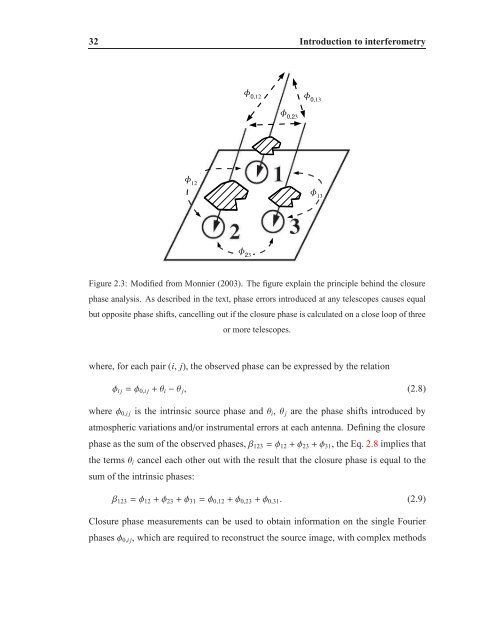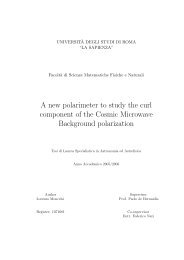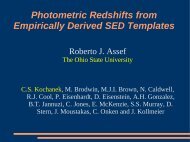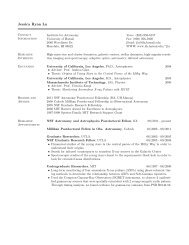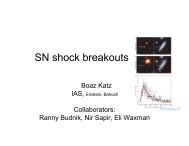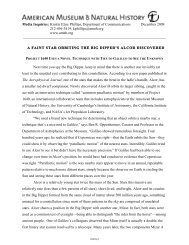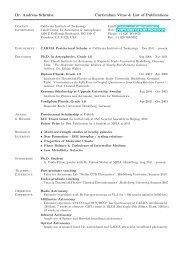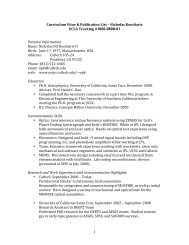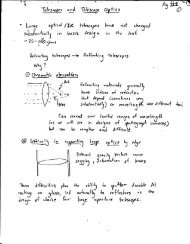Interferometric observations of pre-main sequence disks - Caltech ...
Interferometric observations of pre-main sequence disks - Caltech ...
Interferometric observations of pre-main sequence disks - Caltech ...
Create successful ePaper yourself
Turn your PDF publications into a flip-book with our unique Google optimized e-Paper software.
32 Introduction to interferometry<br />
Figure 2.3: Modified from Monnier (2003). The figure explain the principle behind the closure<br />
phase analysis. As described in the text, phase errors introduced at any telescopes causes equal<br />
but opposite phase shifts, cancelling out if the closure phase is calculated on a close loop <strong>of</strong> three<br />
or more telescopes.<br />
where, for each pair (i, j), the observed phase can be ex<strong>pre</strong>ssed by the relation<br />
φi j=φ0,i j+θi−θ j, (2.8)<br />
whereφ0,i j is the intrinsic source phase andθi,θ j are the phase shifts introduced by<br />
atmospheric variations and/or instrumental errors at each antenna. Defining the closure<br />
phase as the sum <strong>of</strong> the observed phases,β123=φ12+φ23+φ31, the Eq. 2.8 implies that<br />
the termsθi cancel each other out with the result that the closure phase is equal to the<br />
sum <strong>of</strong> the intrinsic phases:<br />
β123=φ12+φ23+φ31=φ0,12+φ0,23+φ0,31. (2.9)<br />
Closure phase measurements can be used to obtain information on the single Fourier<br />
phasesφ0,i j, which are required to reconstruct the source image, with complex methods


